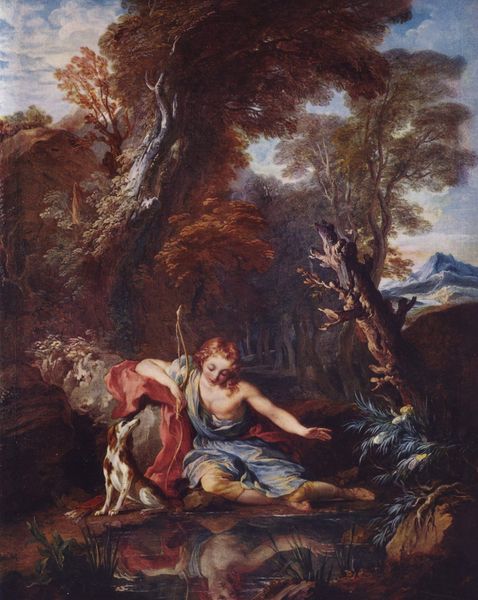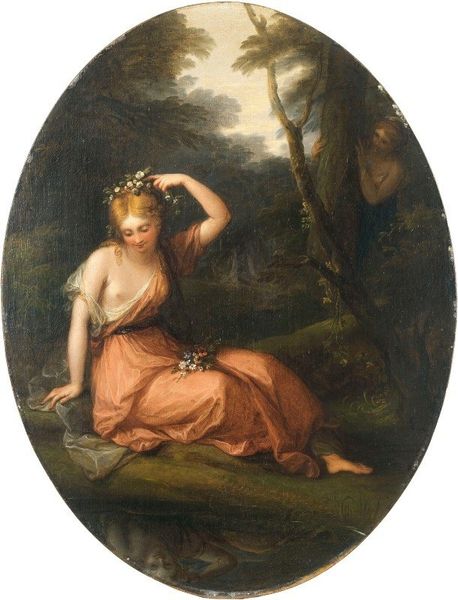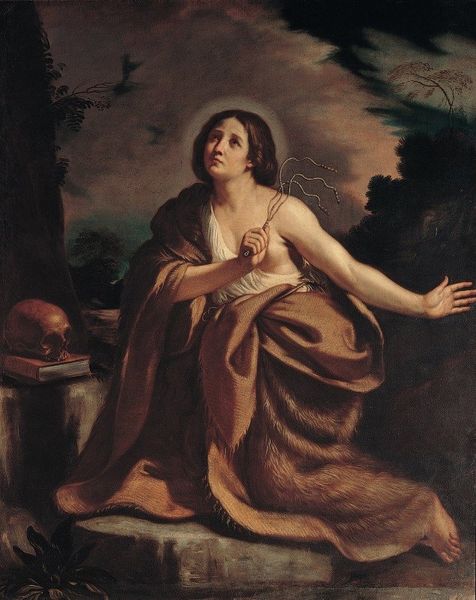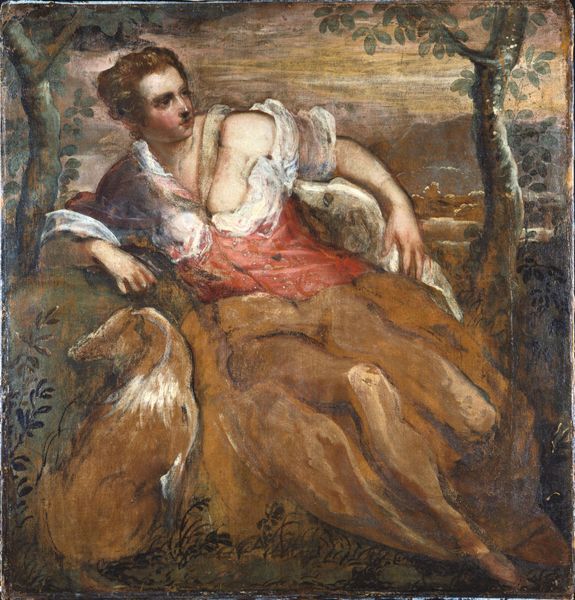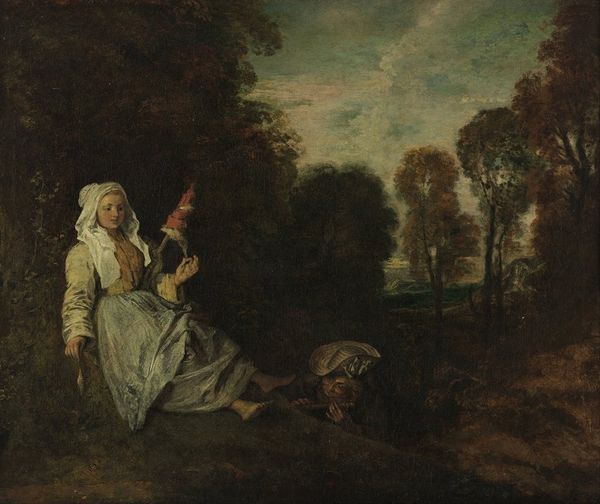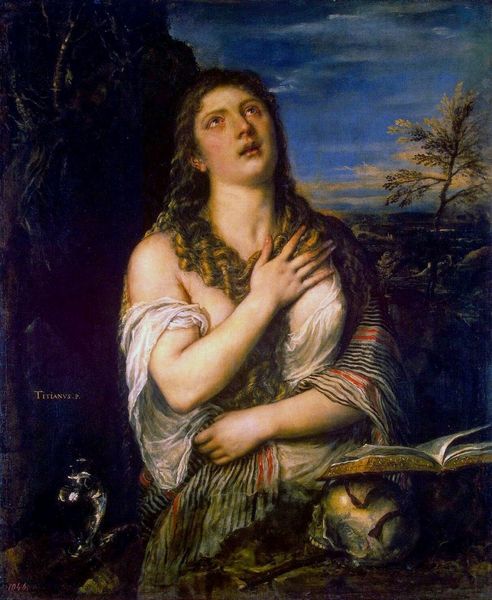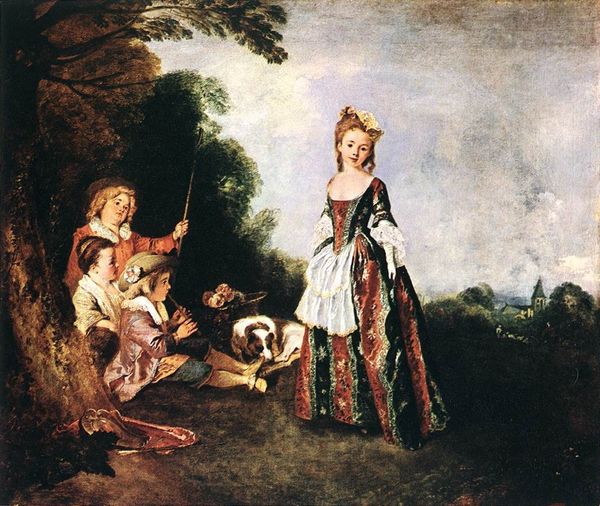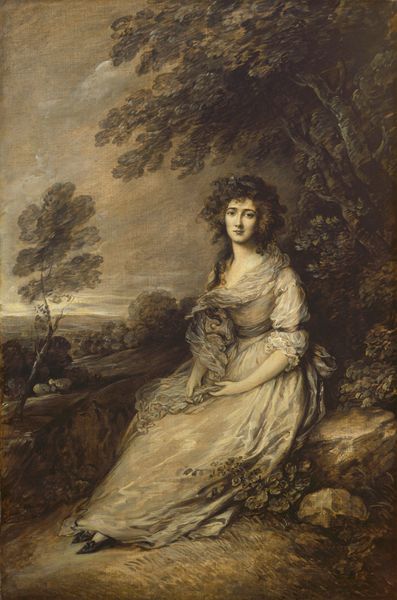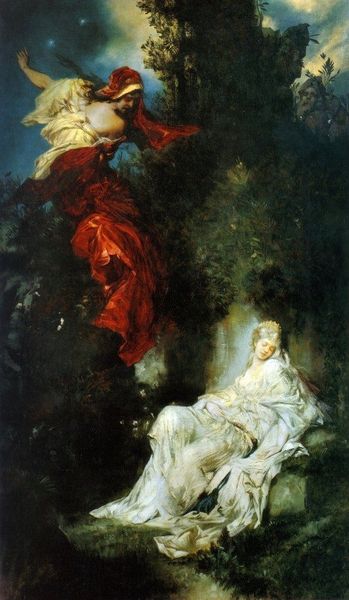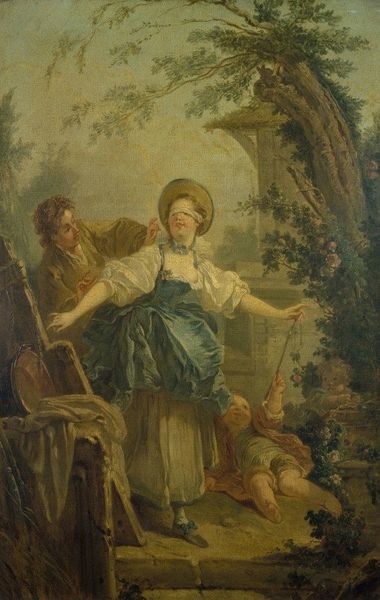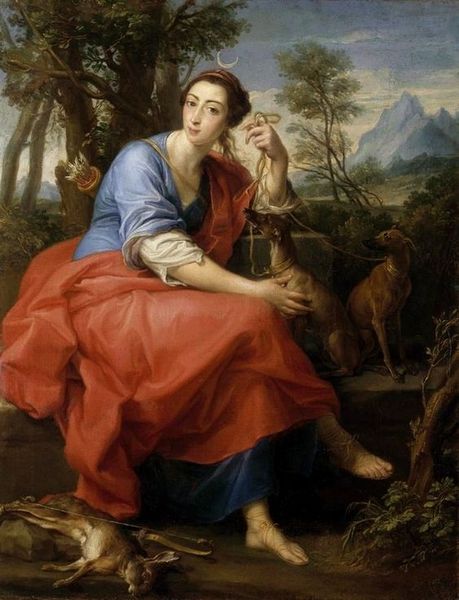
painting, oil-paint
#
portrait
#
allegory
#
baroque
#
painting
#
oil-paint
#
landscape
#
figuration
#
oil painting
#
mythology
#
history-painting
#
portrait art
Dimensions: 73 x 72 cm
Copyright: Public domain
Editor: We're looking at Peter Paul Rubens' oil painting, "Hagar in the Desert," from 1632, housed in the Dulwich Picture Gallery. The rich textures, particularly in Hagar's gown, create a striking visual contrast. What do you see in this piece beyond the narrative? Curator: The immediate impact arises from Rubens' masterful use of chiaroscuro. Notice how the intense light illuminates Hagar’s figure, contrasting sharply with the shadowy landscape. This isn’t simply a depiction, but an exploration of light and shadow to evoke an emotional response. The textures, as you mentioned, play a critical role here. Editor: Yes, the folds of the fabric, the roughness of the rocks...they all add to the feeling of unease. How does the composition contribute to this effect? Curator: The asymmetrical arrangement contributes to a dynamic tension. Hagar isn't centered, and the landscape presses in on her, creating a feeling of confinement. Furthermore, consider the use of diagonal lines – the slope of the rock, the angle of her gaze – all contributing to a sense of movement and instability. This is a composition designed to unsettle, wouldn’t you agree? Editor: Absolutely. It's not just a static portrait but a captured moment of intense emotional distress emphasized by its visual components. I didn’t realize how much the composition alone contributed to this until now. Curator: Precisely. Rubens' brilliance lies in how he uses the formal elements to amplify the narrative and evoke profound emotional responses from the viewer. The semiotics within Rubens’ materiality presents unique relationships of his interpretation of Baroque. Editor: I learned a lot about visual reading; seeing how Rubens' intentional brushstrokes create a dynamic portrait and that narrative extends into visual execution rather than traditional representations. Curator: Indeed. Considering these details gives us an objective appreciation and a richer experience of Baroque’s creative vision through form and the philosophy it entails.
Comments
No comments
Be the first to comment and join the conversation on the ultimate creative platform.
